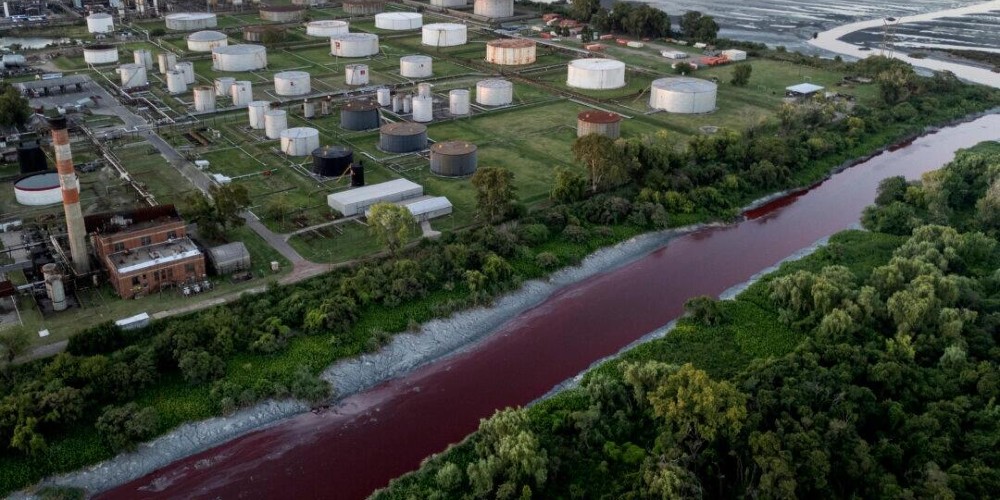(Zero Hedge)—The Sarandí stream that winds through the dense outskirts of Buenos Aires, Argentina, has recently turned blood red, leading to fears of a potential industrial chemical leak.
Local authorities are investigating the stream’s change in color following initial reports on Feb. 6.
Located near Villa Inflamable in Avellaneda, 9 miles south of the Argentine capital, Jacob Burg reports for The Epoch Times that the stream runs alongside tanneries and other industries that use chemicals to turn animal skins into leather. Residents quickly uploaded photos of the crimson stream to social media, spurring fears of the cause of the color change.
One local resident recounted waking early one morning and smelling strong odors.
“At 5:30 a.m., we already had a special and hazardous waste incinerator spewing pollutants into the air,” María Ducomls told The Associated Press. Shortly after she saw the stream, she said, “It looks like a stream of blood; we have never seen it like this.”
The stream flows into the Río de la Plata, a large body of water between Uruguay and Argentina.
Avellaneda officials believe there may be aniline in the stream’s water, a toxic substance used in medicines and dyes.
After officials took water samples, they filed a complaint with the Buenos Aires province Ministry of Infrastructure and Public Services, which will investigate the incident.
According to local residents, the stream has changed to different colors in the past, including gray, green, violet, blue, and brown, sometimes with an oily surface. These reports have led to complaints filed against local businesses since the 1990s. Some cases alleging environmental contamination are still open.
The Province of Buenos Aires’ environmental ministry said in a statement that it had responded on Feb. 6 to a report about the stream’s color change and that it had taken water samples for testing.
Other rivers in the area have faced similar environmental issues. The Matanza-Riachuelo River basin has been named one of Latin America’s most polluted waterways, leading to officials planning public works projects to prevent the dumping of sewage and industrial discharge into the basin.
What Would You Do If Pharmacies Couldn’t Provide You With Crucial Medications or Antibiotics?
The medication supply chain from China and India is more fragile than ever since Covid. The US is not equipped to handle our pharmaceutical needs. We’ve already seen shortages with antibiotics and other medications in recent months and pharmaceutical challenges are becoming more frequent today.
Our partners at Jase Medical offer a simple solution for Americans to be prepared in case things go south. Their “Jase Case” gives Americans emergency antibiotics they can store away while their “Jase Daily” offers a wide array of prescription drugs to treat the ailments most common to Americans.
They do this through a process that embraces medical freedom. Their secure online form allows board-certified physicians to prescribe the needed drugs. They are then delivered directly to the customer from their pharmacy network. The physicians are available to answer treatment related questions.



